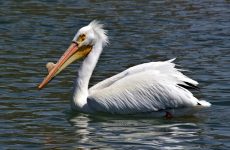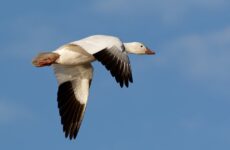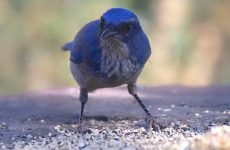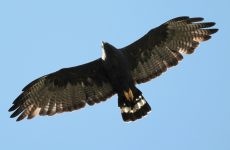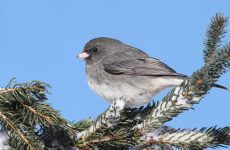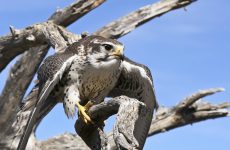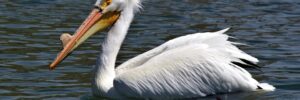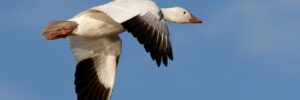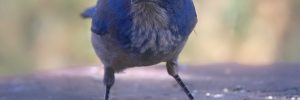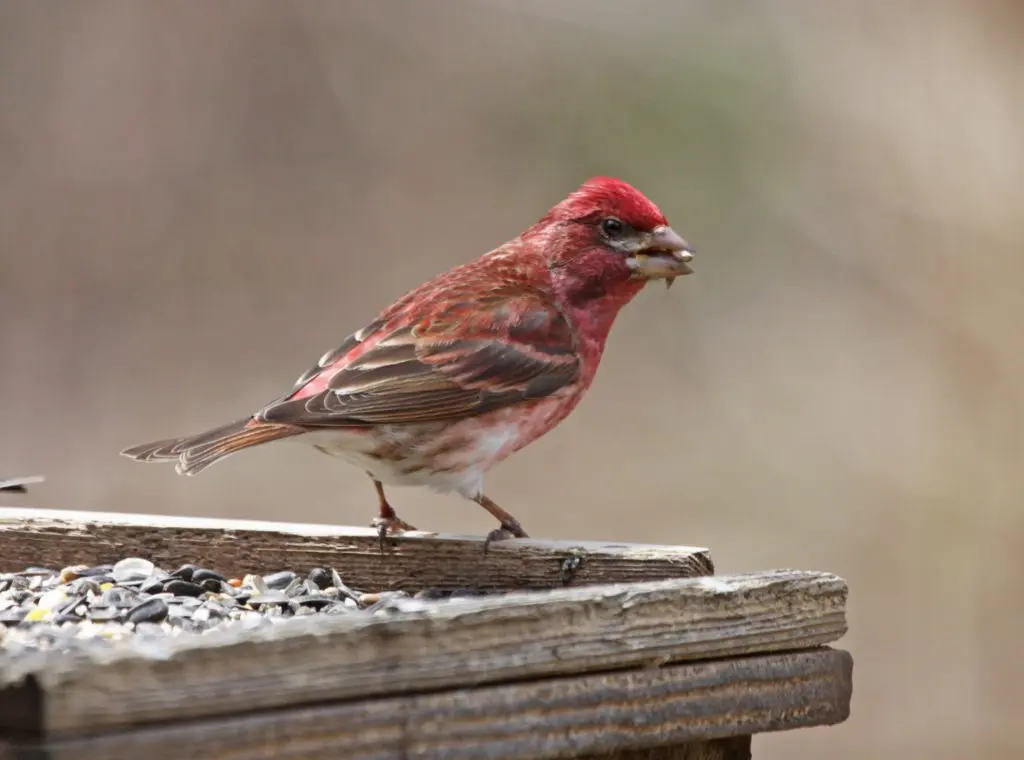
Red birds are more common than you may think, and there are plenty of species to spot.
There are 12 species of red birds in Utah that have been spotted. Of these, 6 species are recognized on state checklists as regularly occurring, and 6 additional species are considered rare or accidental.
This guide will help you identify the species of red birds in Utah according to avibase. Some of these birds migrate, and some remain all year.
You can print out a free bird identification worksheet for Utah to help you identify all birds that visit your backyard.
The most common red bird in both summer and winter in Utah is the House Finch. The Cassin’s Finch and several other species are more commonly seen in summer in Utah. Keep on reading to find out more about these red birds that you can spot in Utah.
12 Red Birds in Utah:
- House Finch
- Cassin’s Finch
- Red Crossbill
- Pine Grosbeak
- Summer Tanager
- Common Redpoll
- White-winged Crossbill
- Purple Finch
- Painted Bunting
- Pyrrhuloxia
- Scarlet Tanager
- Northern Cardinal
12 Red Birds in Utah:
1. House Finch
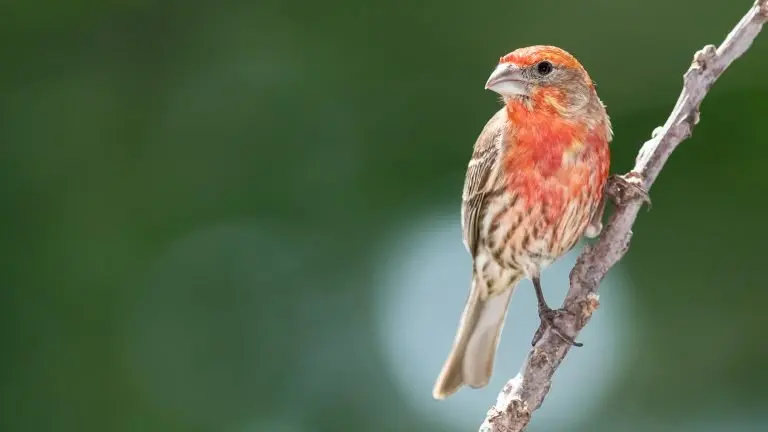
House Finches are very common red birds in Utah all year.
House Finches are another bird with a red head and breast in the males and brown-streaked coloring in the females.
- Length: 5.1-5.5 in (13-14 cm)
- Weight: 0.6-0.9 oz (16-27 g)
- Wingspan: 7.9-9.8 in (20-25 cm)
Originally only in western states, it was introduced to the eastern states and has done very well, even pushing out the Purple Finch.
They can be found in parks, farms, forest edges, and backyard feeders. They can be found in noisy groups that are hard to miss.
You can attract more House Finches to backyard feeders with black oil sunflower seeds or nyjer seeds in tube feeders or platform feeders.
2. Cassin’s Finch
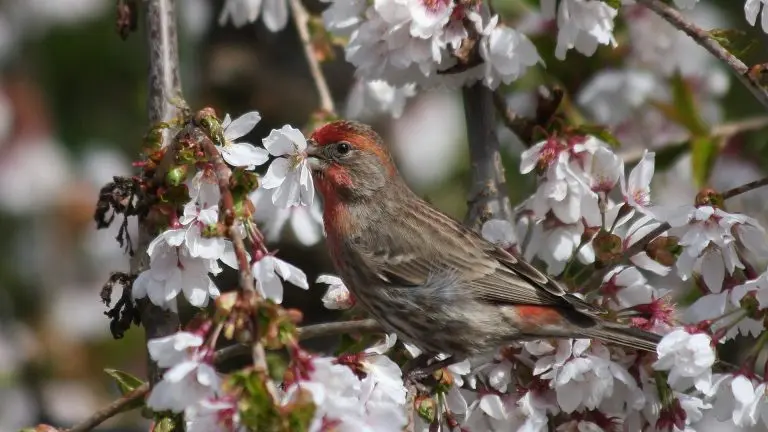
Cassin’s Finches can be seen in Utah all year, especially during summer.
Cassin’s Finches have a red crown, rosy pink head, red-breasts with a whiteish belly, brown back and wings.
- Length: 6.3 in (16 cm)
- Weight: 0.8-1.2 oz (24-34 g)
- Wingspan: 9.8-10.6 in (25-27 cm)
They can be found in mountain forests in western states, foraging in flocks for seeds.
They are not as common in backyards as House or Purple Finches, but they may be attracted with sunflower seed feeders, especially in winter, or fruiting shrubs such as cotoneaster, mulberries, firethorn, grape and apple.
3. Red Crossbill
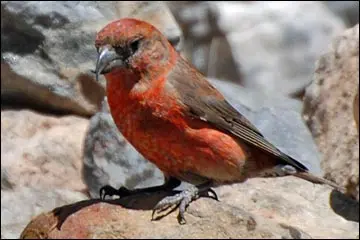
Red Crossbills are not very common in Utah, but they can be spotted all year if you look out for them.
Red Crossbill males are red birds with darker wings and tails. Females are yellow and brown.
They can be found year-round in northern and western states and winter in eastern states.
They feed on conifer seeds and forage in flocks from tree to tree, even breaking unopened cones with their powerful beaks. As well as coniferous forests, they can be found along roadsides consuming grit in the mornings.
4. Pine Grosbeak
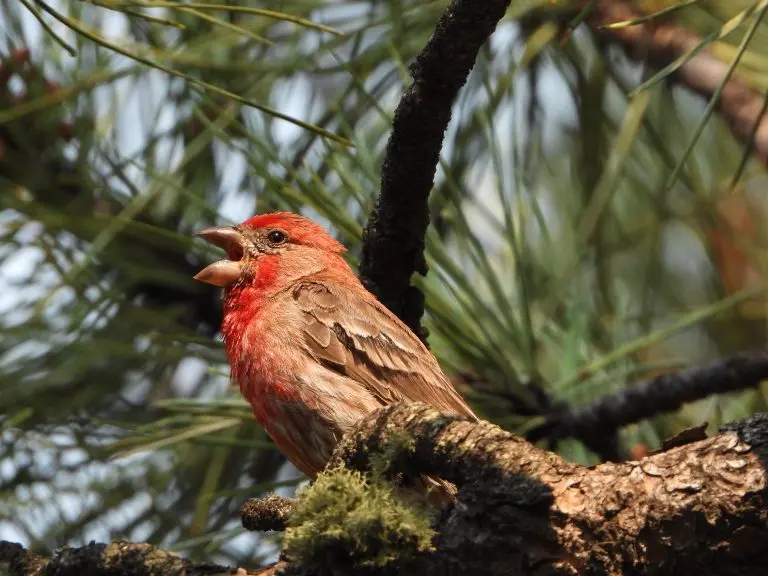
Although not very common, Pine Grosbeaks can be spotted in Utah all year. They are mostly seen in Ashley National Forest, Fishlake National Forest, and Dixie National Forest.
Pine Grosbeaks are a species of finch. The males are red birds with gray on the wings and tail and two white wingbars. Females are gray with dull orange heads and rumps. They are large for finches and relatively slow.
- Pinicola enucleator
- Length: 7.9-9.8 in (20-25 cm)
- Wingspan: 13.0 in (33 cm)
Pine Grosbeaks are mostly found in Canada, but some can be spotted along the US border, the mountainous west and the Sierra Nevada in California.
They live in forests of pine, spruce and fir, feeding on seeds, fruit and buds from these trees. They will also eat some insects in the summer.
You can attract Pine Grosbeaks to black oil sunflower seed feeders or suet feeders.
5. Summer Tanager
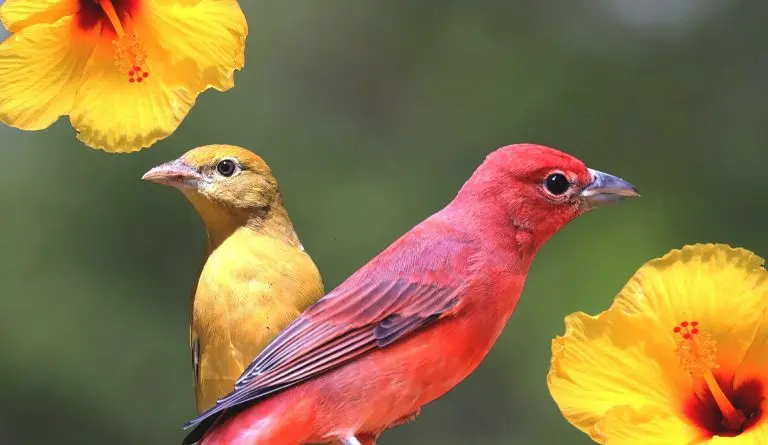
Summer Tanagers are quite rare in Utah but they can be spotted here between April and October.
Summer Tanager males are bright red birds and females are yellow.
- Piranga rubra
- Length: 6.7 in (17 cm)
- Weight: 1.1 oz (30 g)
They breed in southern and eastern states before heading to Central and South America for winter.
They are forest songbirds found in open woodlands and feed on bees and wasps in mid-flight. They catch them and kill them by beating them against a branch and rubbing the stinger off before eating them.
You can attract more Summer Tanagers to your backyard with berry bushes and fruit trees.
6. Common Redpoll
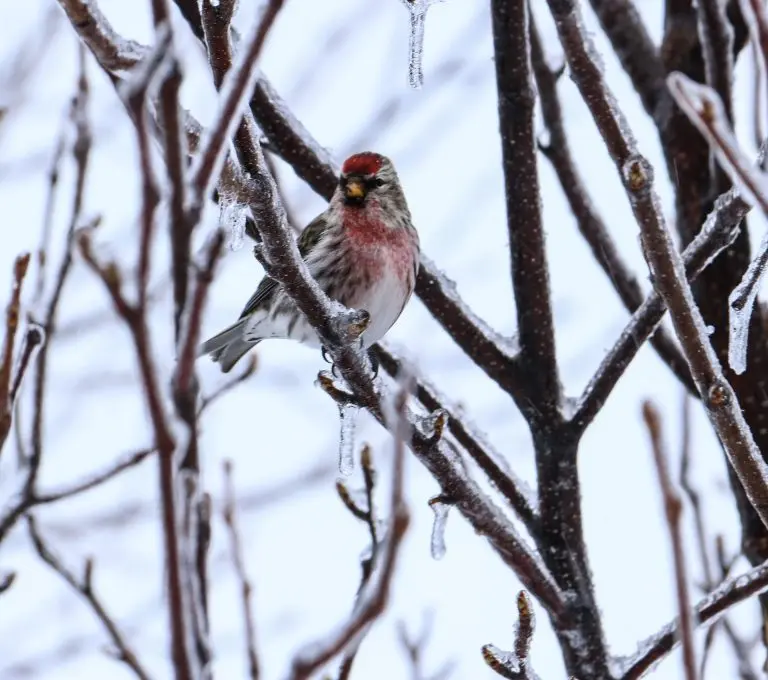
Common Redpolls are considered an accidental species in Utah, but they have been spotted around Salt Lake City.
Common Redpolls have red foreheads, pinky breasts, and brown and white over the rest of their bodies.
- Acanthis flammea
- Length: 4.7-5.5 in (12-14 cm)
- Weight: 0.4-0.7 oz (11-20 g)
- Wingspan: 7.5-8.7 in (19-22 cm)
They can be found in winter in northern states and less frequently in central states.
In winter, they will sometimes tunnel into the snow to stay warm during the night. They can eat up to 42% of their body mass every day and can store up to 2 grams of seeds in a stretchy part of their esophagus.
They can be found in weedy fields or feeding on catkins in trees, but they will also come to feeders for small seeds such as nyjer seeds or thistle.
7. White-winged Crossbill
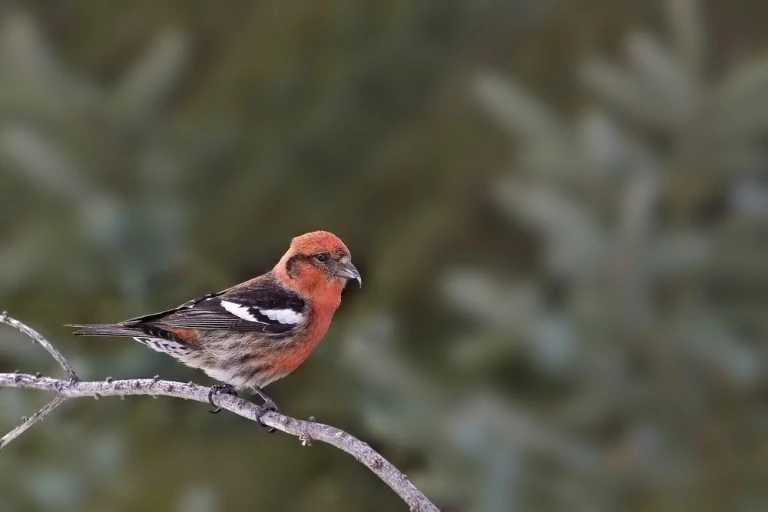
White-winged Crossbills are rare red birds in Utah but they have been spotted in Twin Peaks.
White-winged Crossbills are finches with heavy crossed beaks. Males are red birds with black wings and tails and two white wingbars. Females are yellow and brown and with two white wing bars.
- Loxia leucoptera
- Length: 5.9-6.7 in (15-17 cm)
- Weight: 0.8-0.9 oz (24-26 g)
- Wingspan: 10.2-11.0 in (26-28 cm)
White-winged Crossbills live in forests in Canada, Alaska and sometimes northern US states when cone crops are poor further north. They can be found in spruce forests feeding on seeds.
Unusually these birds breed at any time of year as long as there is enough food.
They can often be heard in large flocks.
8. Purple Finch
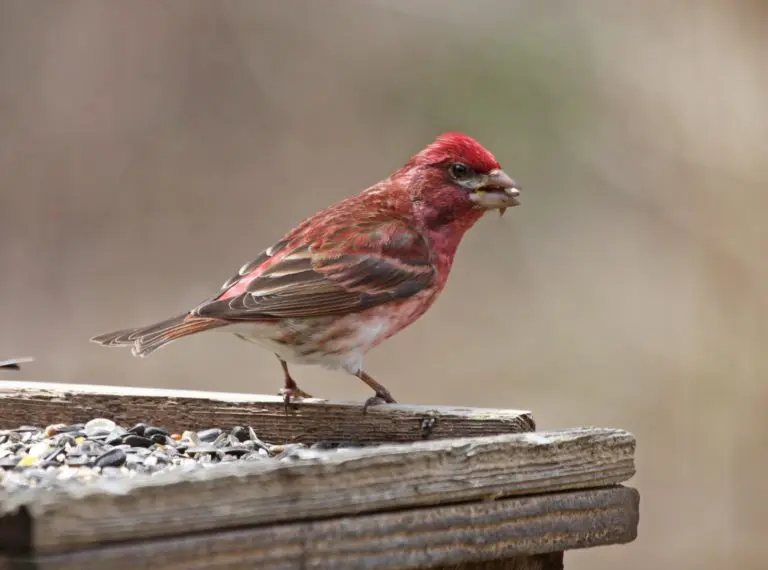
Purple Finches are considered an accidental or rare species in Utah but a few have been spotted around Utah Lake.
Purple Finches look very similar to House Finch with the reddish-purple head and breast with more brown on the back and wings.
- Length: 4.7-6.3 in (12-16 cm)
- Weight: 0.6-1.1 oz (18-32 g)
- Wingspan: 8.7-10.2 in (22-26 cm)
They breed in Canada and overwinter in eastern states but can be found all year in the north-east are Pacific coast.
You can spot them in evergreen forests feeding on seeds but also buds, nectar and berries.
They readily come to feeders for black oil sunflower seeds.
9. Painted Bunting
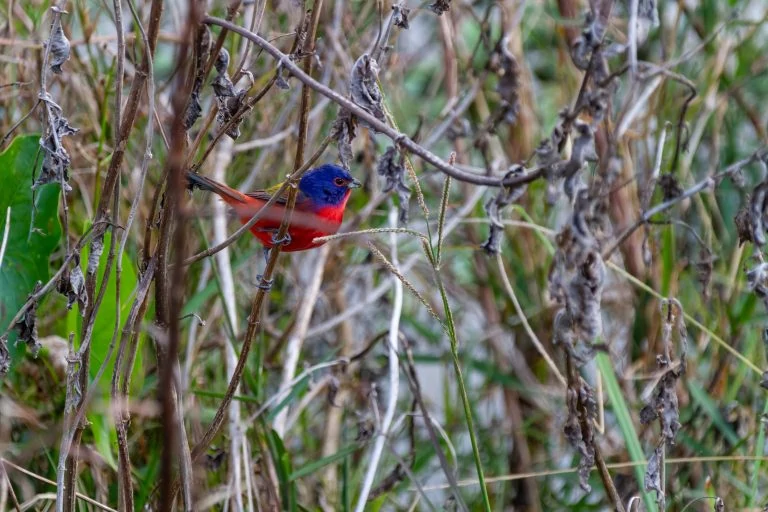
Painted Buntings are considered an accidental species in Utah. Over the past 10 years, there have been sighting in Fairfield and Antelope Island.
Painted Bunting males are a brightly colored patchwork of color with mostly red coloring underneath and with bright blue heads, green wings, and backs. Females are bright yellow-green.
- Passerina ciris
- Length: 4.7-5.1 in (12-13 cm)
- Weight: 0.5-0.7 oz (13-19 g)
Painted Bunting breed in a few states, in the south-central and some coastal areas in the Southeast US, before migrating at night to Central America, southern Florida, and some Caribbean islands.
You can find Painted Bunting in semi-open habitats, mainly foraging for seeds and insects in the breeding season.
To attract painted Bunting to your yard, try adding low, dense vegetation, and feeders filled with white millet or black oil sunflower seeds.
10. Pyrrhuloxia
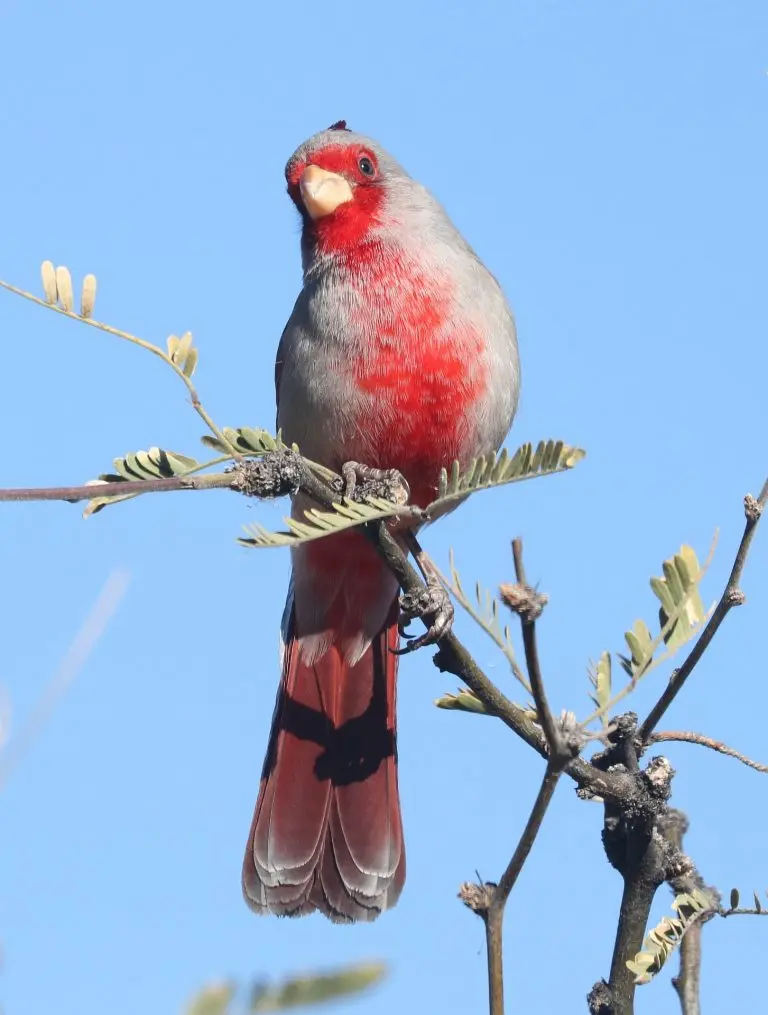
Another accidental species in Utah is the Pyrrhuloxia. They are very rare red birds in the state and have only been spotted in Zion National Park and Beaver Dam Wash National Conservation Area.
Pyrrhuloxia males are grey with lots of red coloring to the face, crest, breast and tail. Females are dull gray with less red coloring.
- Cardinalis sinuatus
- Length: 8.3 in (21 cm)
- Weight: 0.8-1.5 oz (24-43 g)
They are residents of the hot deserts in Texas, New Mexico, Arizona and Mexico.
During the breeding season, they fiercely defend their territory, but in winter, they can be found in flocks of up to 1000.
Pyrrhuloxia feed primarily on seeds but also insects. They can be found at feeders with sunflower seeds but more often prefer them scattered on the ground.
11. Scarlet Tanager
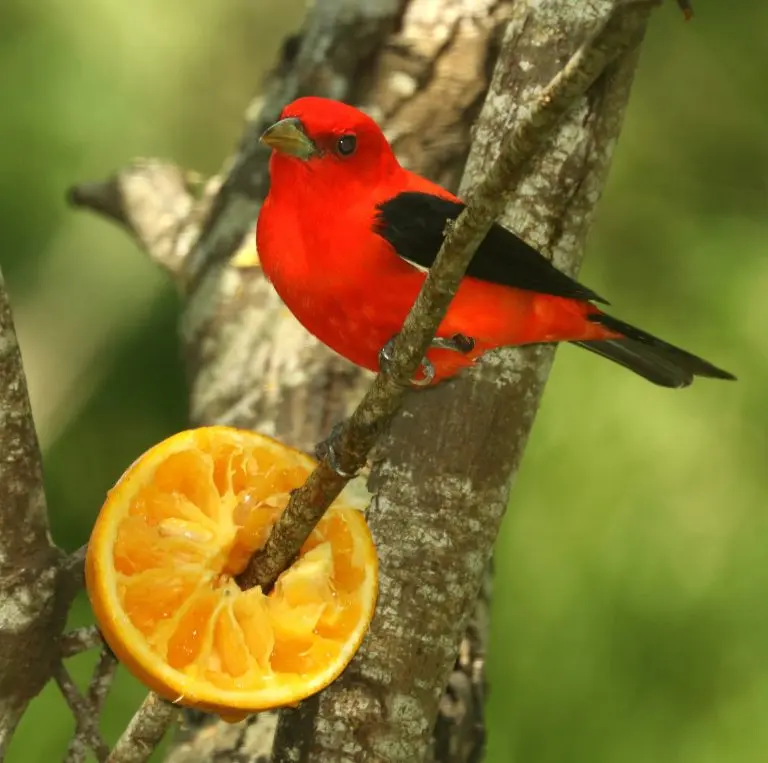
Scarlet Tanagers are considered an accidental or rare species in Utah. However, there are a few recorded sightings near Utah Lake and Willard Bay.
Scarlet Tanagers are bright red birds with black wings and tails. Females are yellow with darker wings and tails.
- Piranga olivacea
- Length: 6.3-6.7 in (16-17 cm)
- Weight: 0.8-1.3 oz (23-38 g)
- Wingspan: 9.8-11.4 in (25-29 cm)
They breed in eastern forests in summer before migrating to South America.
Scarlet Tanagers can be hard to spot as they stay high in the forest canopy.
You can attract more Scarlet Tanagers by planting berry plants such as blackberries, raspberries, huckleberries, juneberries, serviceberries, mulberries, strawberries and chokeberries.
12. Northern Cardinal
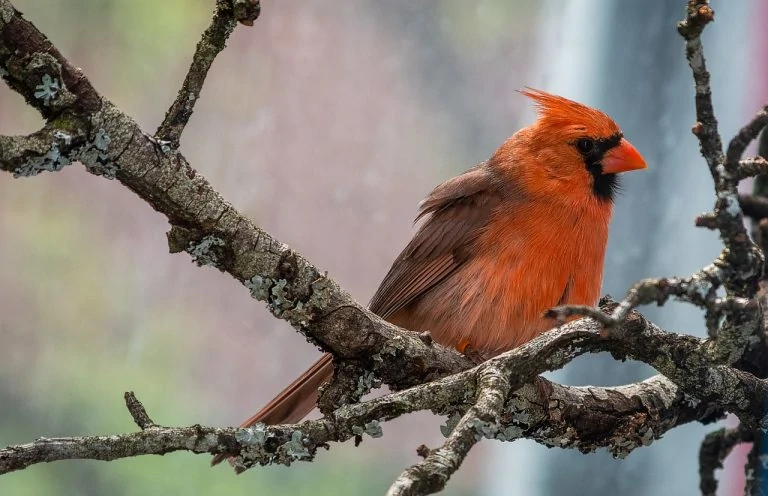
Northern Cardinals are an accidental species in Utah. They are extremely rare and according to records, they have only been spotted in the state twice.
The bright red male Northern Cardinal is a bird with a red head, body and tail, with black around their faces. They are an incredible sight, especially against a white winter background. The females are also showy with their brown coloring, sharp brown crest, red highlights, and red beaks.
- Length: 8.3-9.1 in (21-23 cm)
- Weight: 1.5-1.7 oz (42-48 g)
- Wingspan: 9.8-12.2 in (25-31 cm)
Northern Cardinals are found in eastern and southern states and will sometimes attack their reflection during breeding season as they obsessively defend their territories.
You can attract more Northern Cardinals to backyard feeders with sunflower seeds, peanut hearts, millet, and milo.
They will feed on large tube feeders, hoppers, platform feeders, or food scattered on the ground.
How Frequently Red birds are Spotted in Utah in Summer and Winter
Checklists for the state are a great resource to find out which birds are commonly spotted here. These lists show which red birds are most commonly recorded on checklists for Utah on ebird in summer and winter.
Common Red Birds in Utah in Summer:
House Finch 30.6%
Cassin’s Finch 8.3%
Red Crossbill 1.3%
Summer Tanager 1.1%
Pine Grosbeak 0.8%
White-winged Crossbill 0.1%
Painted Bunting <0.1%
Scarlet Tanager <0.1%
Northern Cardinal <0.1%
Common Redpoll <0.1%
Pyrrhuloxia <0.1%
Common Red Birds in Utah in Winter:
House Finch 34.3%
Cassin’s Finch 2.0%
Pine Grosbeak 0.4%
Red Crossbill 0.4%
Common Redpoll 0.4%
Purple Finch <0.1%
White-winged Crossbill <0.1%

